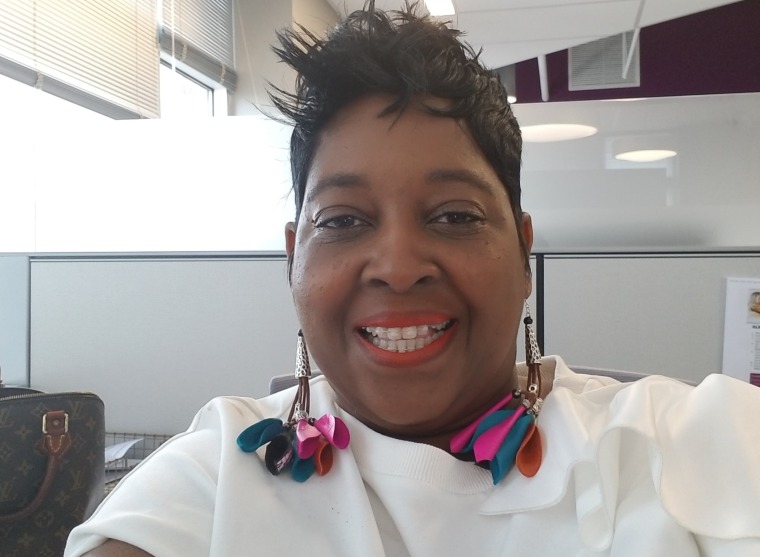Author Jennifer Folsom is partnering with Know Your Value’s A-list roster of experts to launch REBOOT Camp, a series featuring women who have lost their jobs amid Covid-19 and are struggling with their employment search amid uncertain times.
We are following their journeys, their highs, and lows, in hopes that sharing their experience will help others looking to reboot their careers as well.
In the beginning of the Covid-19 pandemic, Tonya Artis-Johnson thought she was in a very good place.
She had a two-decade career in federal contracts management, the bread and butter of the Washington D.C.-area economy. Her husband had a good public sector job, and the two of them had four adult children, with only one still living with them in their Clinton, Maryland home.
Then in December, her small business employer lost a key government contract (a primary source of revenue) and laid off a substantial part of their staff, including Artis-Johnson. And then her husband’s hours got cut, adding even more urgency to her job search. She is just one of the 5.4 million women in the U.S. who have been laid off as a result of Covid-19.
I met Artis-Johnson, 47, nearly a decade ago in a previous job search and knew her to be smart, personable, and darned good at her job. After she was laid off, she reconnected with me via LinkedIn. When I clicked through to her LinkedIn profile to see what she had been up to the last decade, I noticed a whole lot of nothing. Which I knew to be false!
That brings me to my next point: Your online first impressions matter, a LOT.
Artis-Johnson scored big points for a terrific headshot and an impressive profile spanning two decades in a highly-specialized and in-demand field, but there was no description for her roles. Any potential employer would not know what the heck she did all day as a director of contracts management. So, I asked her to forward me a copy of her resume for feedback and my reaction was a big “oh boy, this needs work.”
It wasn’t that the content was bad. But it was hard to read and italicized in Times New Roman. It screamed “I haven’t updated my resume format in a decade.” She also led with her education, which, after just a few years of work experience, becomes much less relevant than accomplishments in roles of similar scale and complexity.
The good news is that these were easy, doable fixes. I immediately reached out to Lynda Spiegel, founder of New York-based Rising Star Resumes, to weigh in on strategies to get Artis-Johnson’s great experience and capabilities to shine.
RELATED: Know Your Value's reboot-your-career camp is here!
“This is not a resume issue, it’s a value proposition issue,” Spiegel told me. “Tonya’s value proposition is, well, missing.” A value proposition is what makes YOU the perfect candidate for this job, your unique set of skills and abilities that brings value to the hiring manager. You have to connect the dots for the resume reader, you have to make an employer understand in less than 14 seconds why you are the best person for this job.
Once you’re clear on your value proposition, Spiegel told me, it becomes an exercise of getting the right information in the right place, all with a format that is pleasing to the eye. With a revised resume and an updated LinkedIn profile that would knock the socks off of any hiring manager, Artis-Johnson got back out there.
Spiegel “explained to me that my old resume was not pleasing to the eye, very long and old school, and that I should have a summary instead of an objective,” said Artis-Johnson. “The resume shouldn’t be a laundry list of what you’ve done, but should make clear why you are the person for the job, what you can offer the employer.”
Lessons YOU can learn from Artis-Johnson:
1. Top priority: Update your LinkedIn profile
Make sure you’ve got a strong photo, which makes a recruiter 14 times more likely to click on your profile. Change your setting to “open to new opportunities” and make sure your value proposition is updated in the Headline and About sections.
2. Get feedback on your resume
It’s a great “soft ask” to let people in your network know that you are on the hunt. Be as specific as possible about the type of job you are seeking. People want to help, but they need to know how. Ask the reviewer what story this resume is telling. Does this value proposition stand out? Does your resume include the right keywords to show up in a recruiter’s search? Pro tip: Ask a friend in recruiting, even if they don’t have a position open, to run your resume through their applicant tracking system to see what keywords show up. Edit accordingly.
3. Be ready to make a pivot
While Spiegel got Artis-Johnson’s resume in great shape with a refined value proposition and a beautiful format, it was missing some keywords that were pertinent to her specific industry. With input and advice from trusted industry contacts, Artis-Johnson took the revised resume and tweaked it so that it would stand out and make it through automated resume readers.
In the coming weeks, follow along to see how Artis-Johnson takes her refreshed resume and updated LinkedIn profile to her job search. She now has three different interviews scheduled in the next two weeks and will take us along with her.
Jennifer Folsom is vice president of growth at ICF Next. She lives in Alexandria, Virginia, with her husband Ben and has three teenage sons. Her practical guide to modern working motherhood," The Ringmaster," is out now.
